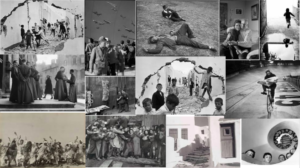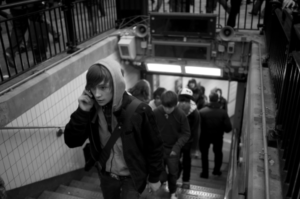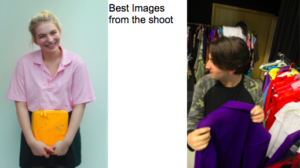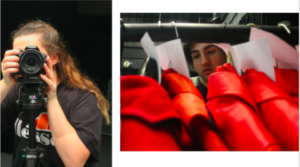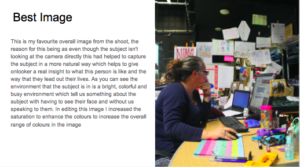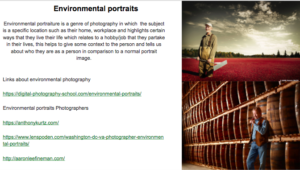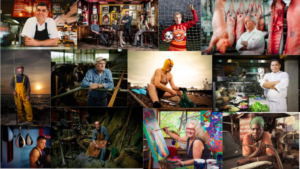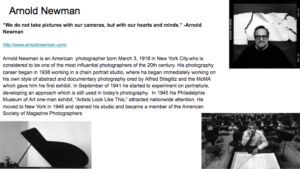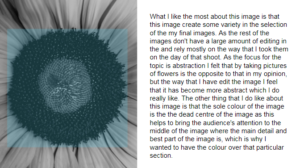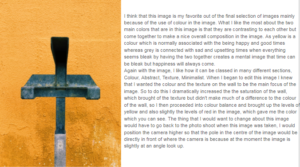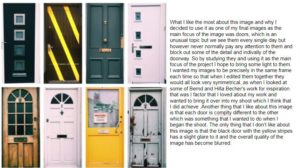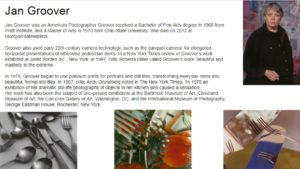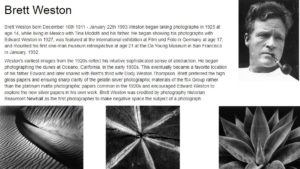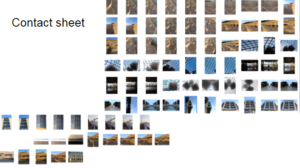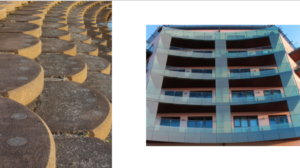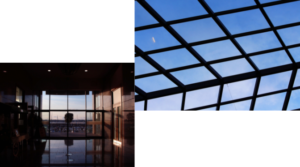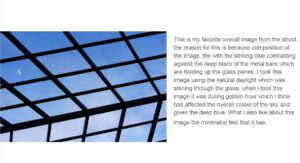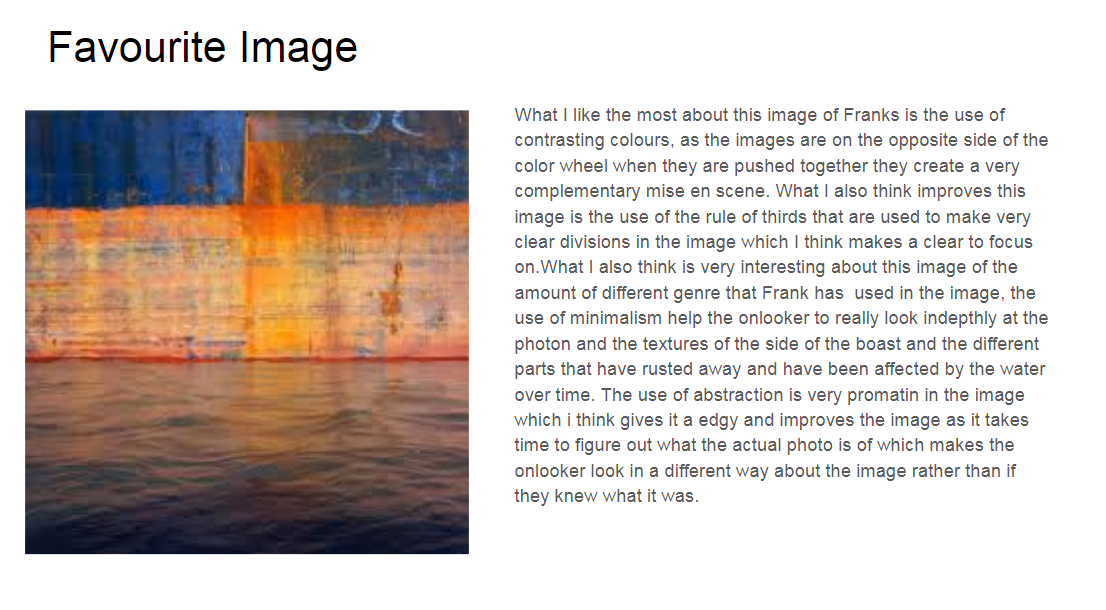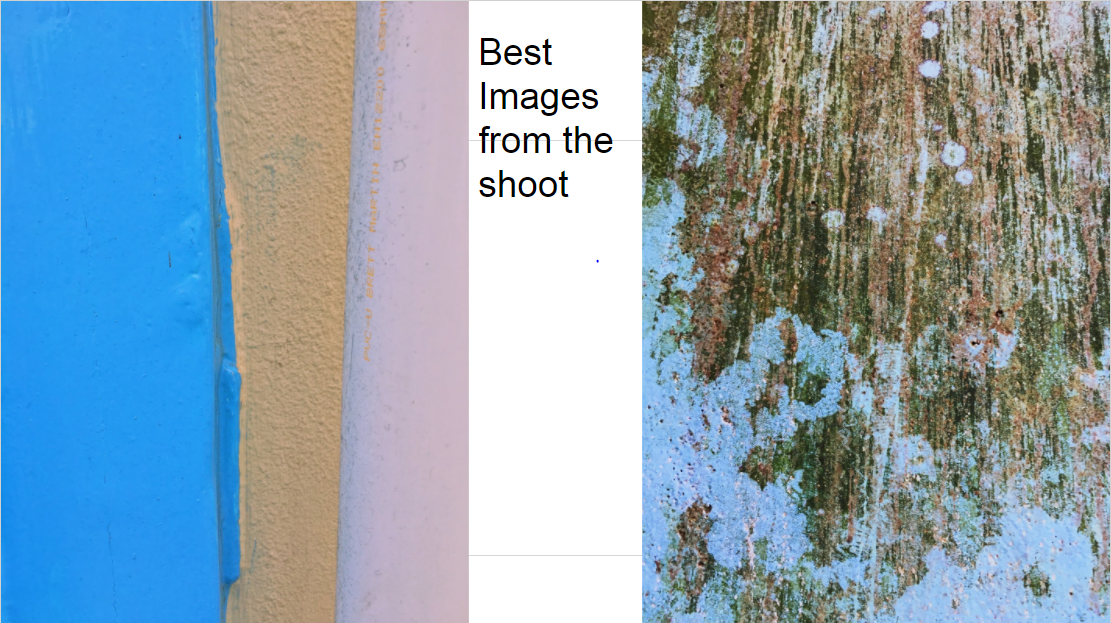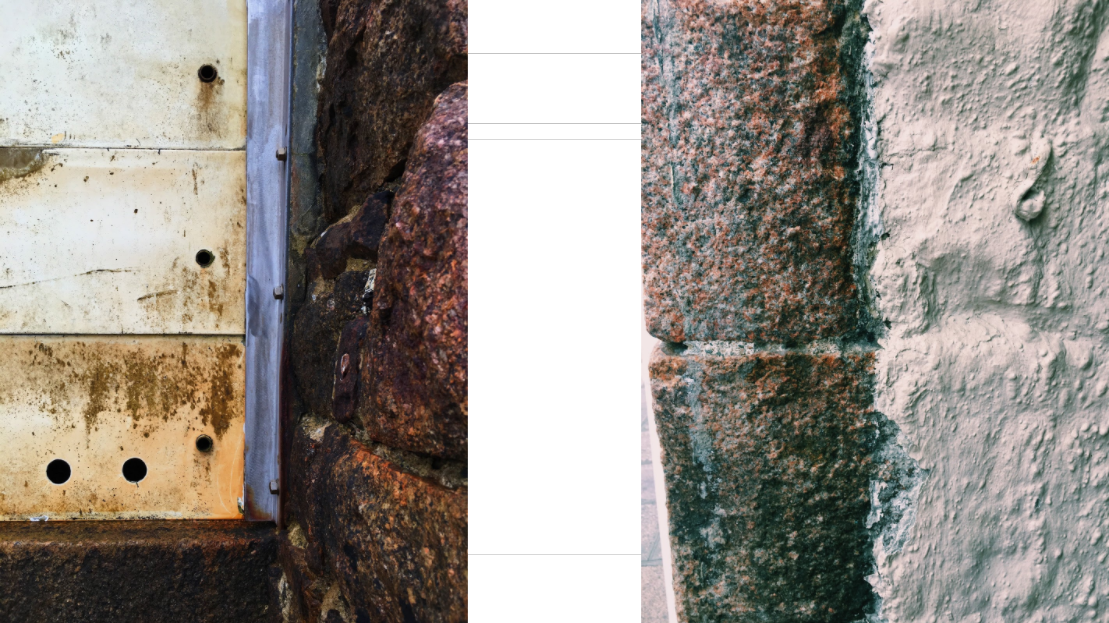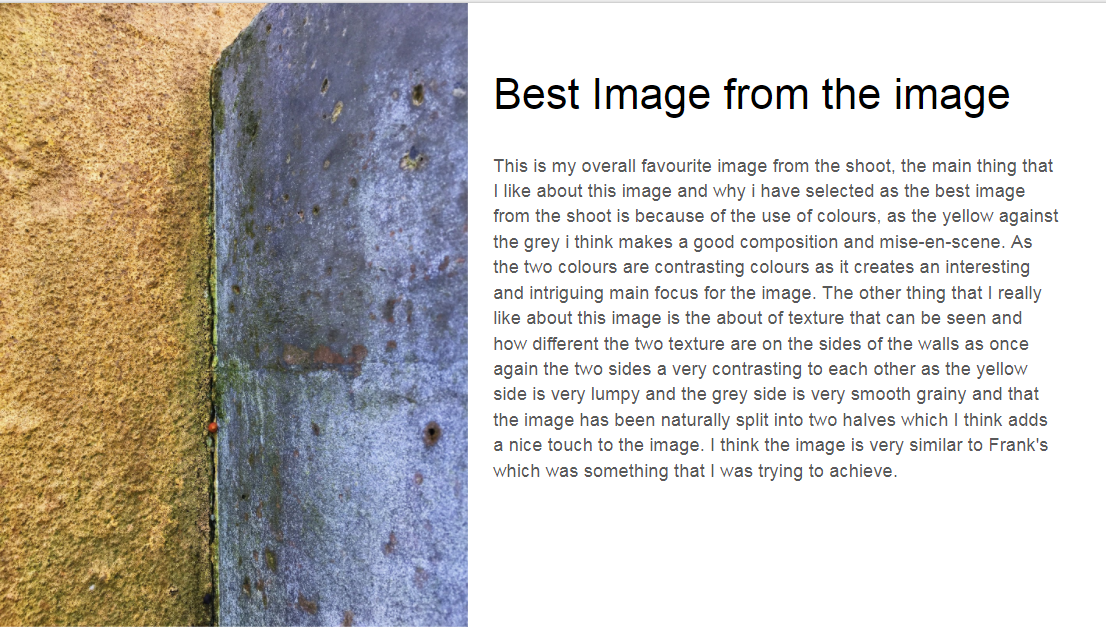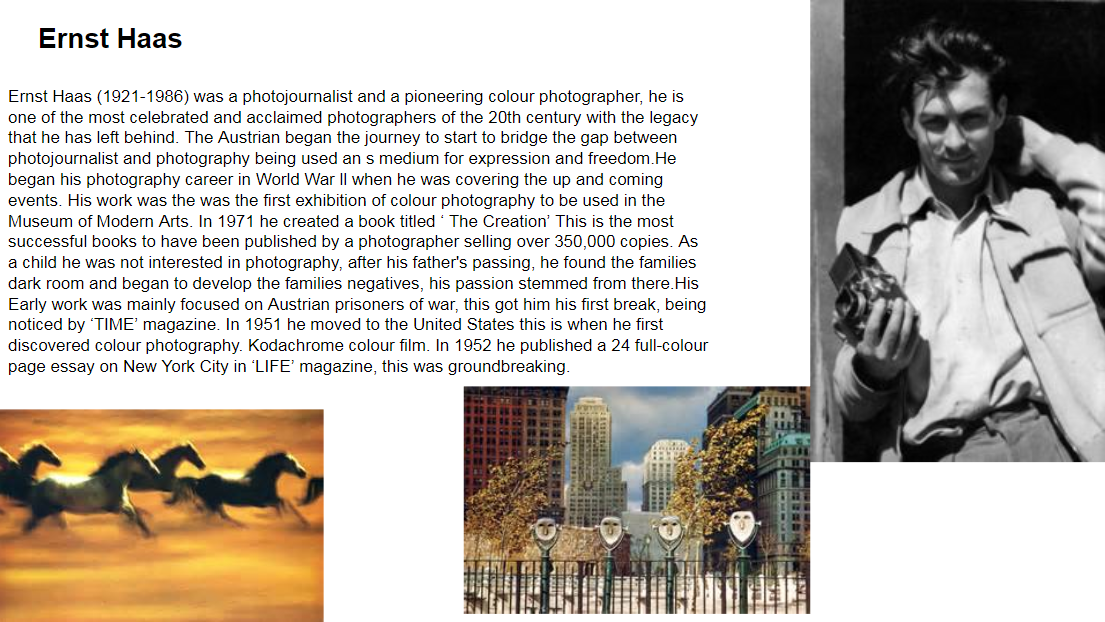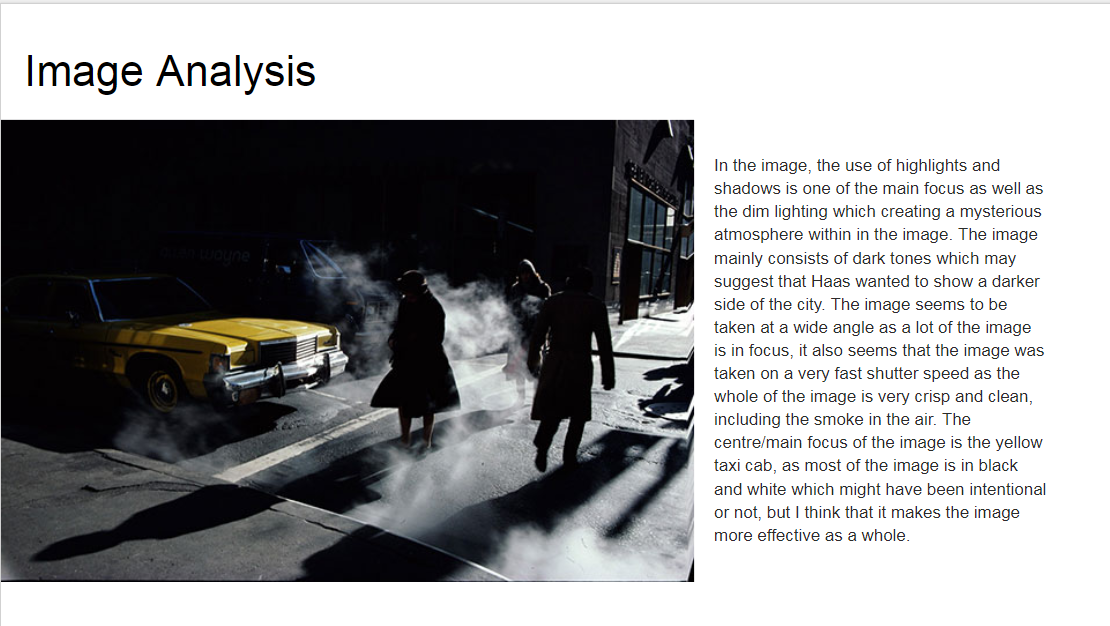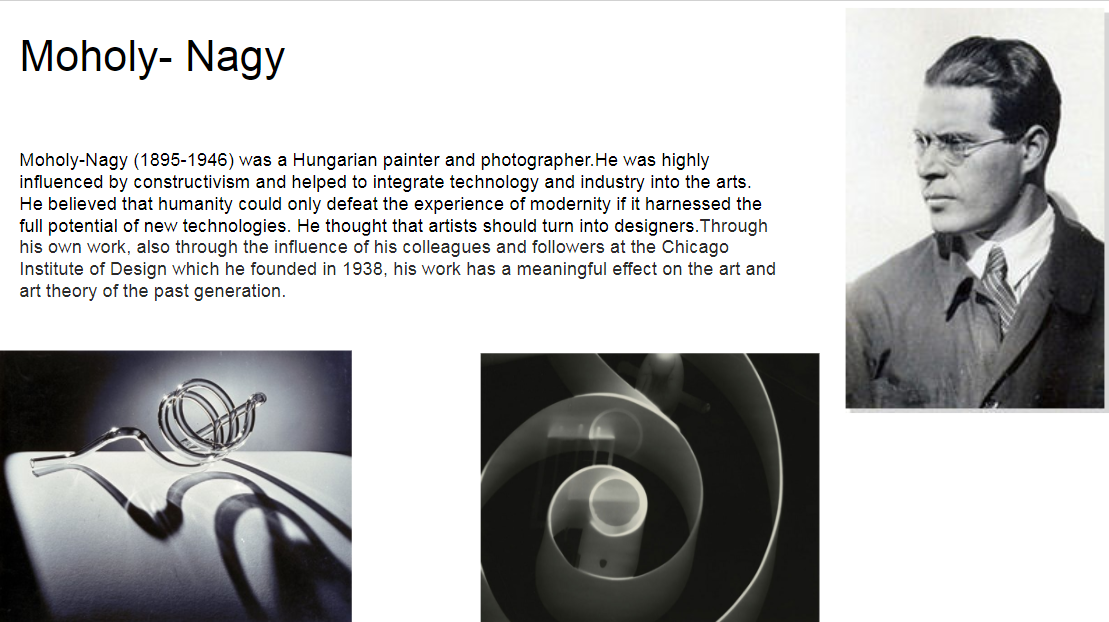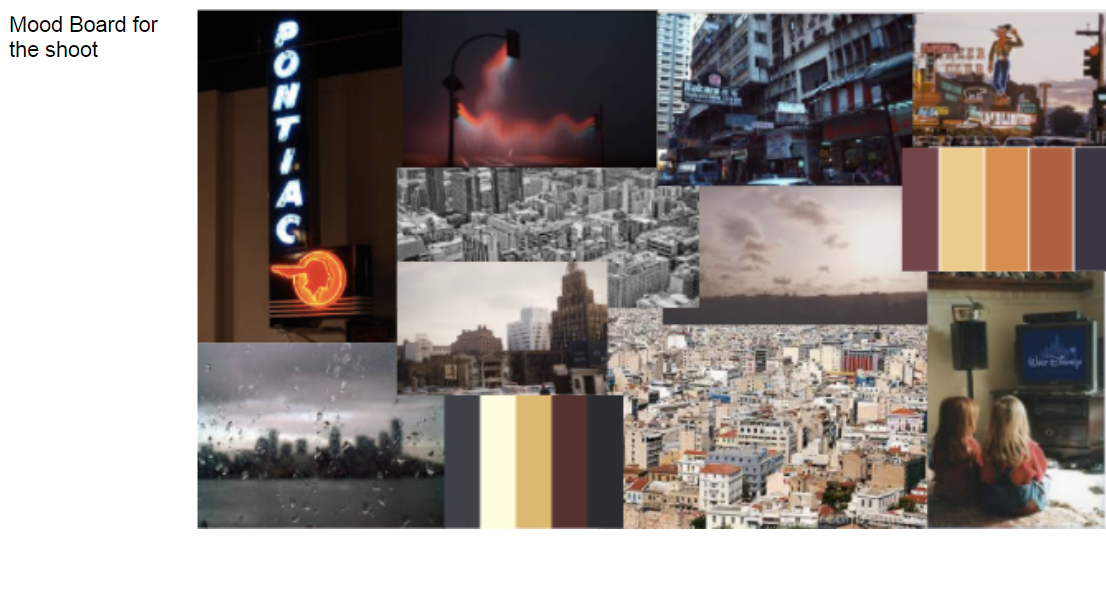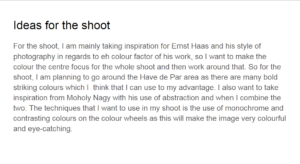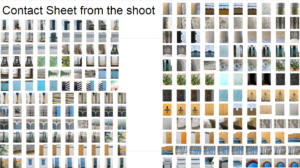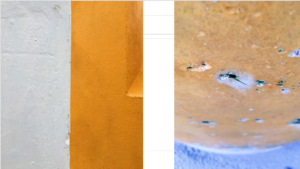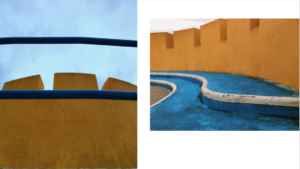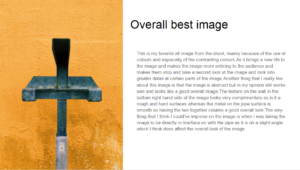Saul Leiter – In Saul’s image we are looking at a man who is the main focus of the mage through a fogged up window. The lighting is coming from the other side of the window however it is slightly muffled due to the fog in the window.  The image would have been taken on a normal shutter speed as the man is in focus, which suggest that the had stopped walking or was concentrating on something, whereas the truck that is in the back if the image is slightly blurry/out of focus. The image has a very neutral colour palette, which could be due to the snow which has blocked out the colour of the street colour palette the only real color in the image is the yellow from the truck on the street.
The image would have been taken on a normal shutter speed as the man is in focus, which suggest that the had stopped walking or was concentrating on something, whereas the truck that is in the back if the image is slightly blurry/out of focus. The image has a very neutral colour palette, which could be due to the snow which has blocked out the colour of the street colour palette the only real color in the image is the yellow from the truck on the street.
Henri Cartier Bresson – This image is a massive contrast to the image taken by Henri Cartier Bresson, in his image we see a boy jumping over a puddle and his reflection appearing in the puddle so by having a person as the center focus of the image seems to be the only thing that the two images have in similarity.  Technically the image is very different from Saul’s the first reason this being is that Henri’s images is very sharp and clean, the image must have been taken on a very quick shutter speed to capture the boy jumping in mid air and not to get any blur from him jumping. Henri image is also in total black and white and nearly features the full scale of Ansel Adam’s zone system.
Technically the image is very different from Saul’s the first reason this being is that Henri’s images is very sharp and clean, the image must have been taken on a very quick shutter speed to capture the boy jumping in mid air and not to get any blur from him jumping. Henri image is also in total black and white and nearly features the full scale of Ansel Adam’s zone system.

 1923 he acquired his hand-held Leica camera
1923 he acquired his hand-held Leica camera 